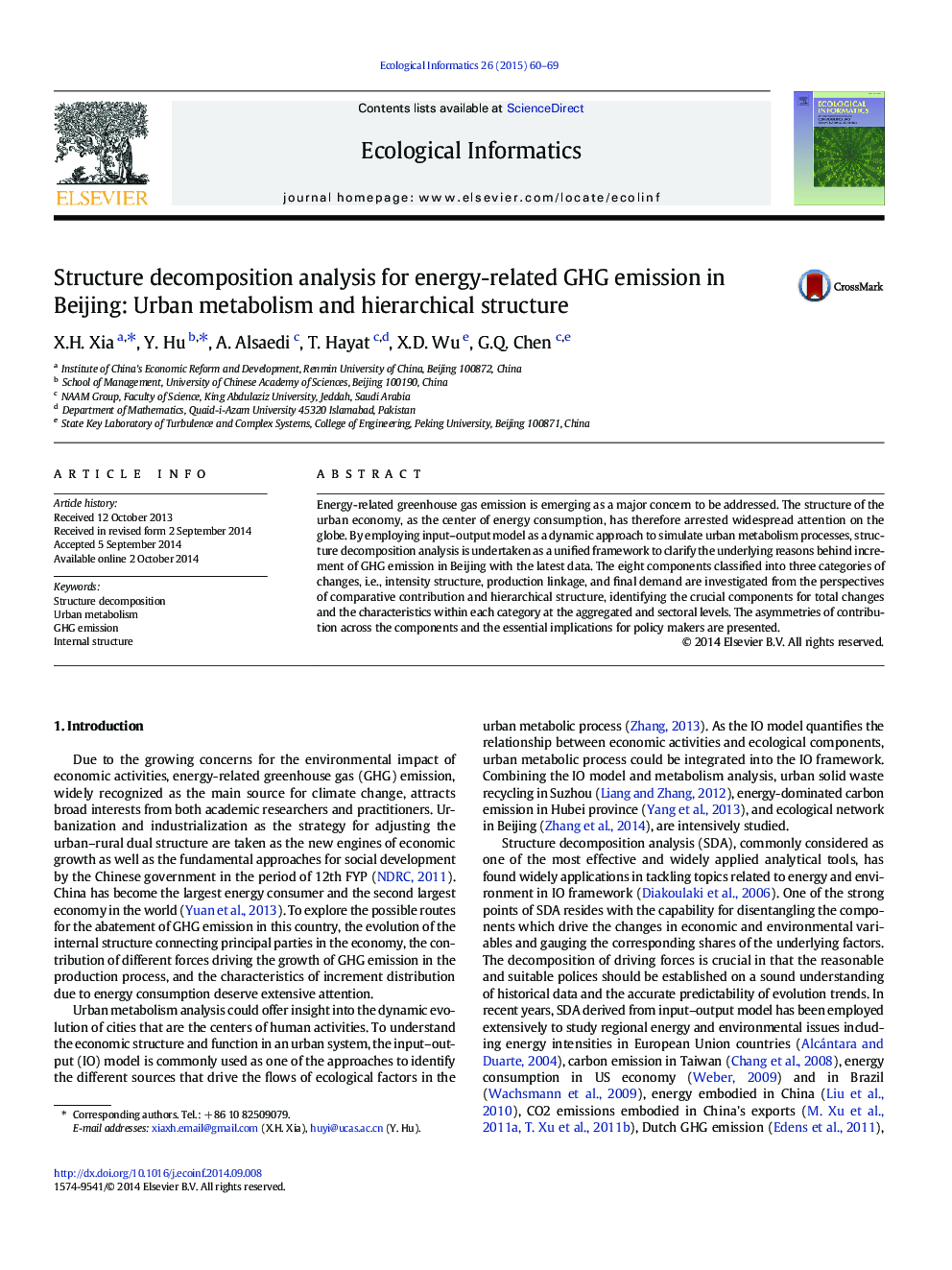| Article ID | Journal | Published Year | Pages | File Type |
|---|---|---|---|---|
| 4374856 | Ecological Informatics | 2015 | 10 Pages |
Abstract
Energy-related greenhouse gas emission is emerging as a major concern to be addressed. The structure of the urban economy, as the center of energy consumption, has therefore arrested widespread attention on the globe. By employing input-output model as a dynamic approach to simulate urban metabolism processes, structure decomposition analysis is undertaken as a unified framework to clarify the underlying reasons behind increment of GHG emission in Beijing with the latest data. The eight components classified into three categories of changes, i.e., intensity structure, production linkage, and final demand are investigated from the perspectives of comparative contribution and hierarchical structure, identifying the crucial components for total changes and the characteristics within each category at the aggregated and sectoral levels. The asymmetries of contribution across the components and the essential implications for policy makers are presented.
Related Topics
Life Sciences
Agricultural and Biological Sciences
Ecology, Evolution, Behavior and Systematics
Authors
X.H. Xia, Y. Hu, A. Alsaedi, T. Hayat, X.D. Wu, G.Q. Chen,
